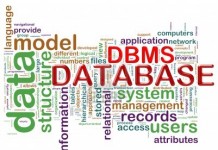Dear Aspirants,
Welcome to the Professional Knowledge Section in Affairscloud.com. Here we are providing sample questions in Computer Networking. It will be useful for the upcoming SBI Assistant Manager(System) and RRB Officer Scale – II(IT Officer) examinations. We have also included some important questions that are repeatedly asked in previous exams.
- Which of the following consists set of switches connected by physical links?
A. Circuit Switched Network
B. Datagram Network
C. Virtual Circuit Network
D. All of these
E. None of theseA. Circuit Switched Network
Explanation:
In Circuit-switched networks, a physical path is dedicated to a single connection between two end-points in the network for the duration of the connection. - In _________, there is no resource reservation and the resources are allocated on demand.
A. Circuit Switched Network
B. Datagram Network
C. Virtual Circuit Network
D. All of these
E. None of theseB. Datagram Network
Explanation:
In Data gram Network there is no resource reservation and the resources are allocated on demand. It means there is no reserved bandwidth on the links. - A Virtual Circuit is a cross between a circuit switched network and ?
A. LAN
B. Datagram Network
C. MAN
D. Both (B) and (C)
E. None of theseB. Datagram Network
Explanation:
A Virtual Circuit is a cross between a circuit switched network and a Datagram Network. Virtual Circuit has characteristics of both networks. - Which of the following is an example for circuit switched Network?
A. Analog telephone network
B. Ethernet
C. Internet Protocol
D. User Datagram Protocol
E. None of the AboveA. Analog telephone network
Explanation:
Example of a circuit-switched network is the early analog telephone network. - Connection-oriented packet switching is also known as?
A. Circuit Switched Network
B. Datagram Network
C. Virtual Circuit Network
D. All of these
E. None of theseC. Virtual Circuit Network
Explanation:
Connection-oriented packet switching is also known as Virtual Circuit Network. - Connectionless packet switching is also known as?
A. Circuit Switched Network
B. Datagram Network
C. Virtual Circuit Network
D. All of these
E. None of theseB. Datagram Network
Explanation:
Connection less packet switching is also known as Datagram Network. Packet switching classified into two types. They are connection less packet switching, also known as datagram switching, and connection-oriented packet switching, also known as virtual circuit switching. - Which of the following is an example for connection less protocol?
A. Frame Relay
B. X.25
C. Multi Protocol Label Switching
D. Transmission Control Protocol
E. EthernetE. Ethernet
Explanation:
Connection less protocols are Ethernet, Internet Protocol (IP), and User Datagram Protocol (UDP). - Which of the following is an example for connection oriented protocol?
A. Frame Relay
B. X.25
C. Multi Protocol Label Switching
D. Transmission Control Protocol
E. All of theseE. All of these
Explanation:
Connection oriented protocols are Frame Relay, X.25, Multi Protocol Label Switching and Transmission Control Protocol. - Which of the following is a type of data-carrying technique for high-performance telecommunications?
A. Ethernet
B. Multiprotocol Label Switching (MPLS)
C. Internet Protocol (IP)
D. User Datagram Protocol (UDP)
E. None of theseB. Multiprotocol Label Switching (MPLS)
Explanation:
Multiprotocol Label Switching (MPLS) is a type of data-carrying technique for high-performance telecommunications. - ATM stands for _______
A. Asymmetrical Transfer Mode
B. Asynchronous Transfer Mode
C. Asynchronous Transmission Mode
D. Asymmetrical Transmission Mode
E. None of theseB. Asynchronous Transfer Mode
Explanation:
Asynchronous transfer mode (ATM) is a switching technique used by telecommunication networks.
AffairsCloud Recommends Oliveboard Mock Test
AffairsCloud Ebook - Support Us to Grow
Govt Jobs by Category
Bank Jobs Notification





